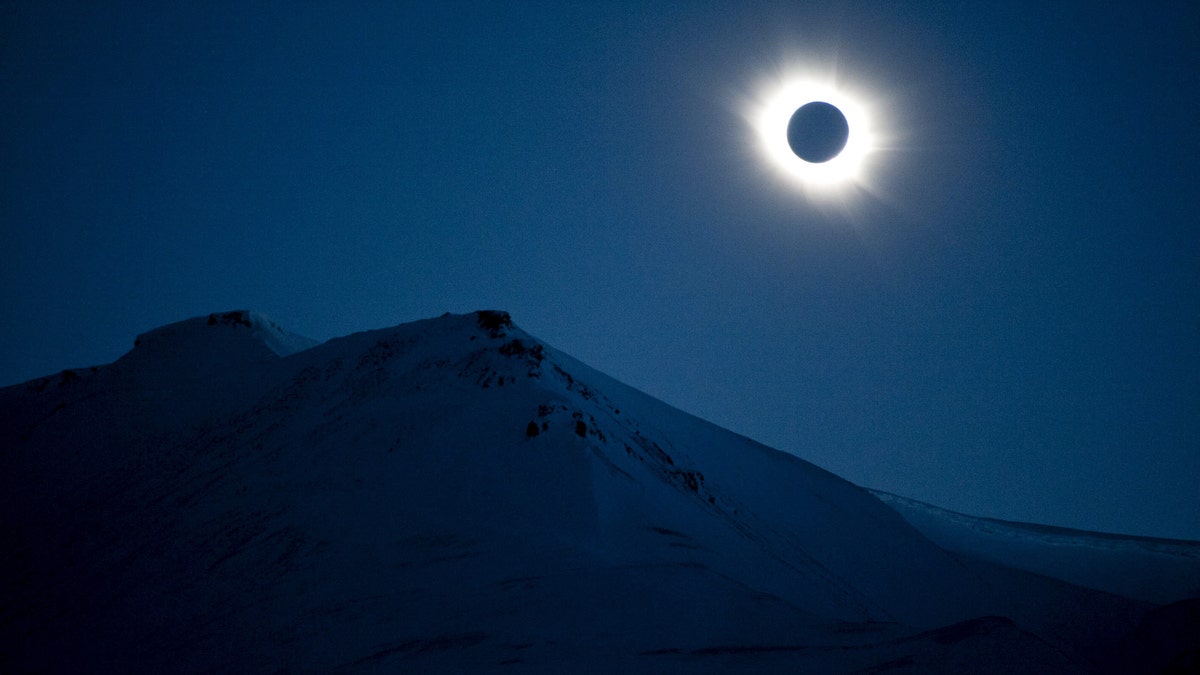
A total solar eclipse is seen in Longyearbyen on Svalbard March 20, 2015. (REUTERS/Jon Olav Nesvold/NTB scanpix)
Tuesday seems to be a double-header for cosmic events: A total solar eclipse will shadow Indonesia and the North Pacific Ocean, and a 100-foot-wide asteroid will streak past Earth.
The total solar eclipse of March 2016 is the only total eclipse of the sun of the year. The last one occurred in March 2015 and this time around the moon's shadow will travel across the Earth late Tuesday (March 8), for the Pacific, and early Wednesday (March 9) in Indonesia. (Strangely, because of the international dateline, this actually happens in the opposite order — it starts off over Indonesia and travels eastward across the Pacific Ocean; it will be Tuesday for about the last third of its journey.) So while its timing is firm, you'll need to check a list to tell when exactly to look out for a full or partial eclipse.
Remember, do not look directly at the sun with the naked eye or a telescope — you can use special eclipse-viewing glasses or build a pinhole projector. Solar Eclipses: An Observer's Guide (Infographic )
The asteroid's arrival is uncertain in a different way: researchers originally thought the asteroid flyby would be Saturday (March 5), but updated their predictionin late February. The asteroid should pass by about 3 million miles from Earth, but there's a possibility it will approach as close as 15,000 miles, NASA officials said in a statement.
If you're not lucky enough to live in the right geographical area to see either a total solar eclipse, where the moon entirely blots out the sun, or a partial one, where a dark bite is taken out of it, you can still watch the process live in a webcast hosted by the Slooh Community Observatory. The Slooh broadcast will begin March 8 at 6 p.m. ET and will stretch until 9 p.m. ET. You can also watch the webcast live on Space.com, courtesy of Slooh.
NASA will host its own solar eclipse webcast starting at 8 p.m. ET on NASA TV, and they will have a variety of events lined up to explore the research they'll do during the eclipse: NASA scientists will be answering questions on Twitter, Google+, Facebook and Instagram with the hashtag #eclipse 2016, and they'll be tweeting with the account @NASASunEarth.
For those hoping to observe the passing asteroid, 2013 TX68, live coverage has not yet been announced — but NASA officials said in their statement that it would likely be very dim and difficult to observe due to the distance from Earth. It last flew by Earth two years ago at a distance of 1.3 million miles.
Wherever you are, you can check back here at Space.com this week for our full coverage of the two events and what scientists can learn from them.
Editor's note: If you safely capture an amazing photo of the March 8 total solar eclipse and would like to share it with us and our news partners for a story or gallery, send images and comments in to managing editor Tariq Malik at spacephotos@space.com.
